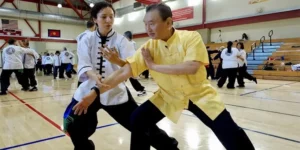Tai Chi, the ancient Chinese “supreme ultimate fist,” combines martial arts with mindful movement. Originating in 17th-century China, it harmonizes yin and yang through slow, flowing forms. Beginning tai chi is best for stress relief, balance, and flexibility, basic tai chi suits all ages. This guide covers its history, beginner exercises, home learning, Tai Chi equipment for beginners, and comparisons to yoga and Qigong.

Tai Chi Basics
Tai Chi, an ancient Chinese martial art, is good for both body and mind. Whether you’re curious about its origins or eager to start practicing, this part covers everything you need to know as a beginner.
What Is Tai Chi?
Tai Chi, or Taijiquan, combines slow, flowing movements with deep breathing and mental focus. Originally a martial art, it’s now widely practiced for stress relief, balance improvement, and flexibility. The term Tai Chi means “supreme ultimate fist,” reflecting its harmony of opposites (yin and yang).
Some facts:
- Where does Tai Chi come from?
It originated in 17th-century China and emerged in the Chen family of Chenjiagou (Henan Province) during the Ming Dynasty. Besides, another mythical origin story attributes Tai Chi to the Taoist monk Zhang Sanfeng, who allegedly inspired its soft techniques after observing a crane and snake in combat. Over the centuries, other styles of Tai Chi emerged.
- What is Tai Chi used for?
Tai Chi Quan is slow, flowing movements and mindfulness makes it suitable for beginners and all ages. It improves balance, flexibility, and strength, particularly in older adults.
Tai chi combines deep breathing and meditation to lower cortisol levels and help relaxation. It cultivates mental clarity and emotional resilience through deliberate, meditative movement.
Originating in Taoist and Chinese medicine principles, Tai Chi aims to unblock and harmonize the flow of qi through the body. Tai Chi is a cultural preservation, especially in Chinese communities, as a living tradition.
How To Start with Tai Chi?
This part introduces the basic exercises of Tai Chi for beginners, how to learn Tai Chi at home for free, and how often Tai Chi is suitable for practice.
Basic Tai Chi Exercises for Beginners
Do you want to start practicing Tai Chi? Start by learning the basic movements and Tai Chi mindfulness.
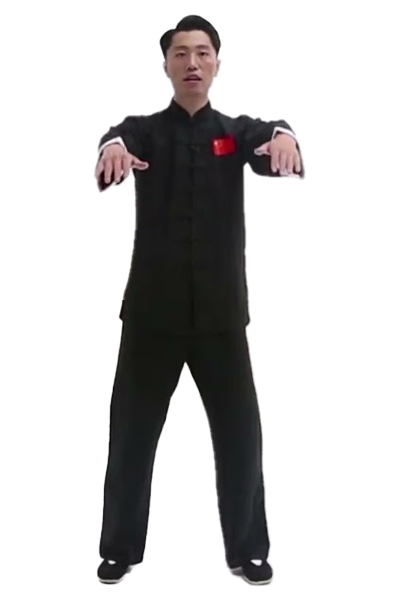
1. Qǐshì: Centering, taking root, and beginning your practice.
- Stand with feet shoulder-width apart, knees slightly bent.
- Relax your shoulders, tuck your chin slightly, and imagine a rope pulling your head upward.
- Lower your arms slowly back to your sides.
- Repeat 3–5 times, keeping your movement and slow breaths together.
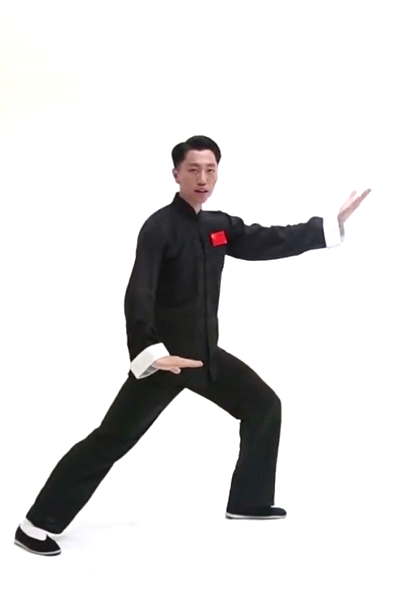
2. Yě Mǎ Fēn Zōng: Coordination, weight shifting, and balance.
- Start in a horse stance. Shift weight to your right leg.
- Step forward with your left foot, placing it heel-first.
- As you step, raise your left hand to chest height and lower your right hand to hip.
- Shift weight forward into the left leg, turning your body slightly left.
- Return to the starting position and repeat on the right side.
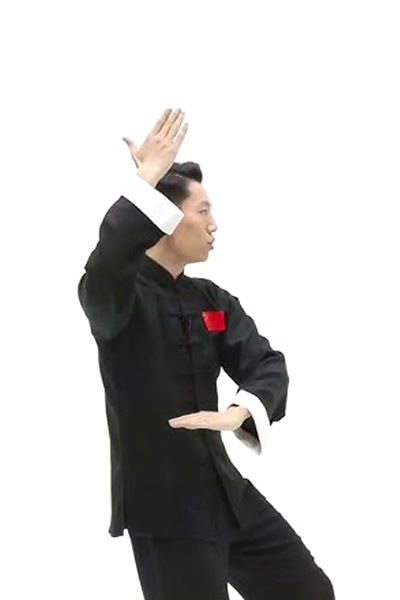
3. Lǚ Xī Ào Bù: Spinal rotation, hip flexibility, and mindfulness.
- Stand with feet parallel. Shift weight to your right leg.
- Step forward with your left foot, keeping your knee slightly bent.
- As you step, turn your body left and “brush” your left hand past your knee while your right hand arcs upward.
- Shift weight into the left leg, keeping in the stance.
- Repeat on the opposite side.
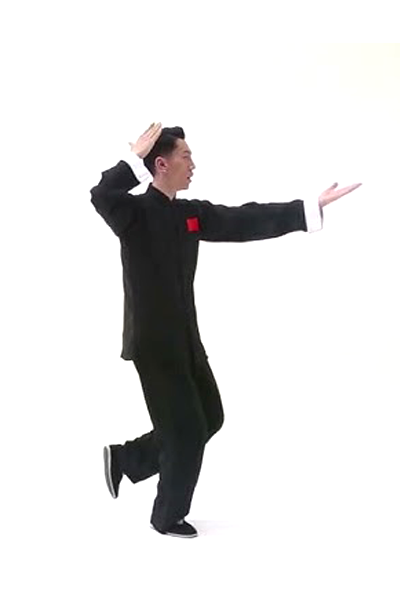
4. Dào Juǎn Gōng: Coordination and calming the mind.
- Begin in a horse stance. Step back with your right foot.
- As you step back, raise your right hand to your ear and push forward with your left palm.
- Shift weight to your back leg, keeping your body upright.
- Return to the starting position and alternate sides.
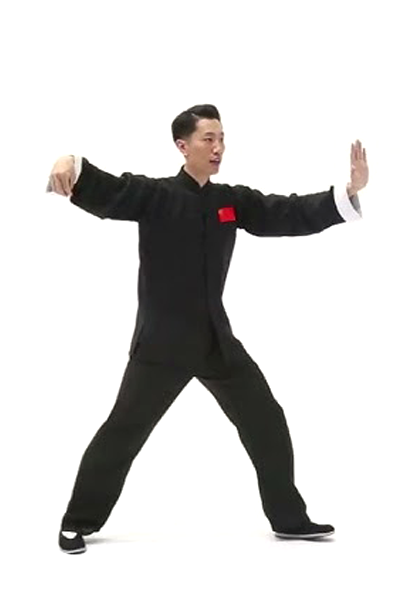
5. Yún Shǒu: Lateral movement, fluidity, and relaxation.
- Stand with feet shoulder-width apart. Shift weight to your left leg.
- Bring your right foot slightly toward your left, maintaining balance.
- Sweep your hands across your body in a horizontal arc: left hand rises, right hand lowers.
- Shift weight to the right leg and repeat the motion in the opposite direction.
- Imagine your hands moving clouds in slow, smooth circles.
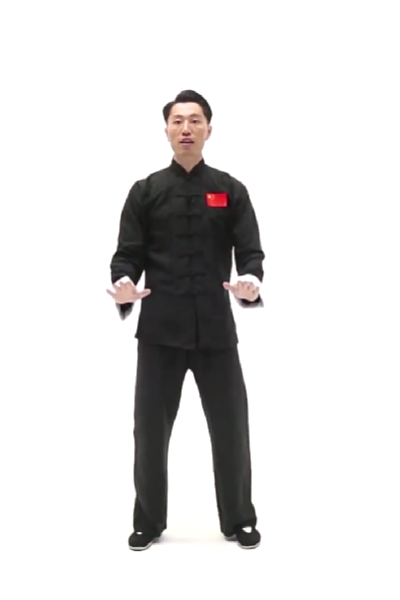
6. Shōushì: Centering mind and concluding the session.
- Return to a stance with feet parallel.
- Bring your hands to your lower abdomen, palms facing up.
- Slowly lower your hands while breathing, imaging energy settling into your core.
- Pause for 30 seconds to feel balance of your body and mind.
How To Learn Tai Chi At Home for Free
You don’t have tai chi class to begin. Just follow these resources:
YouTube Channels
- Tai Chi for Beginners by David-Dorian Ross: 12-part foundational series certified by the Tai Chi Alliance.
- Yang Style 24 Form by Dr. Paul Lam: Medically approved routines for arthritis and balance improvement.
- Daily Tai Chi by Nick Dreher: 15-minute morning flows with posture breakdowns.
Standard Courses
- Shen Jiangfei Martial Arts Center
- Training Plan: Short, mid and long term.
Tai Chi Quan Home Exercise Tips
Mirror Training: Place a full-length mirror at 45° to observe knee alignment and shoulder symmetry.
Learning By Motion:
- 0-5 mins: Warm-up.
- 5-15 mins: Master 1-2 moves.
- 15-20 mins: Repeat 5 times smoothly.
Tai Chi Equipment for Beginners
Starting your Tai Chi requires not just basics but also the equipment. This part covers everything beginners need to know about Tai Chi clothing, footwear, training tools, and more.
The classic Tai Chi uniforms use silk or cotton fabrics, while modern Tai Chi clothing uses moisture-wicking materials. Tai Chi pants with elastic waistbands and wide legs ensure free movement. And the thin-soled, flexible designs like Chi shoes or Tai Chi slippers are good for ground connection.
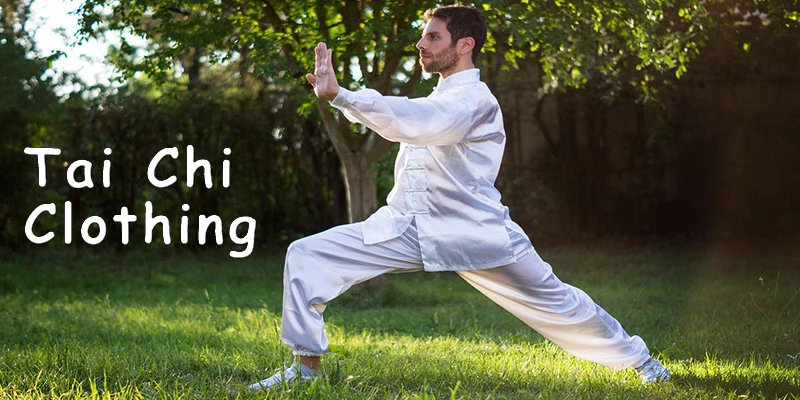
So, whether you are choosing Tai Chi wear or the best footwear for Tai Chi, ensure the gear doesn’t restrict movement. If you don’t know how to choose, your coaches can recommend Tai Chi outfits for women or men.
Why Tai Chi Is Perfect for Beginners
Unlike high-intensity training, Tai Chi is suitable for beginners of all ages while providing numerous benefits. That’s why it’s popular for beginners:
Low-Impact and Adaptable: Tai Chi is slow, flowing movements that minimize joint strain, making it suitable for all fitness levels—including seniors or those with limited mobility. Beginners can safely build strength and reducing overexertion.
Improves Balance and Coordination: Studies show that regular Tai Chi practice enhances your body stability and reduces fall risks. The deliberate weight shifts and controlled postures train the body with greater awareness.
Relieve Stress: Combining deep breathing with movement activates the parasympathetic nervous system, lowering stress hormones. Many beginners report improved focus and relaxation after just a few exercises.
No Equipment: Tai Chi can be practiced anywhere—a park, living room, or office. All you need is comfortable clothing and a little space. Beginner tai chi videos and local classes make it easy to start.
Beginner Tai Chi Routines
Starting Tai Chi as a beginner can feel confusing, but short and structured routines make it easy and enjoyable. This part explores beginner Tai Chi routines and recommended resources.

Best Tai Chi Videos for Beginners
Learning from home? The best Tai Chi videos for beginners offer step-by-step guides.
Look for YouTube channels like Tai Chi for Health Institute or Mei Quan Tai Chi, which break down basic moves step-by-step. Search for “beginner Tai Chi routines” to find videos on posture, breathing, and foundational forms like the Yang 24-Step.
Short on time? A 5-minute Tai Chi routine is perfect. Start with gentle warm-ups like Cloud Hands to awaken the body. A 5 minute Tai Chi session during breaks can relieve nervousness.
Look for titles like “Tai Chi for Beginners” DVD by Dr. Paul Lam, which teaches the Sun or Yang styles.
From free online Tai Chi class videos for beginners to purchasing Tai Chi DVDs for beginners, as long as you stick with it every day and keep increasing the length of your classes, you will succeed.
Tai Chi for Balance And Flexibility
Tai Chi is for improving balance and flexibility, making it ideal for seniors and beginners. This part introduces routines, benefits, and resources to help you exercise Tai Chi.
Why Does Tai Chi Balance Exercises for Seniors
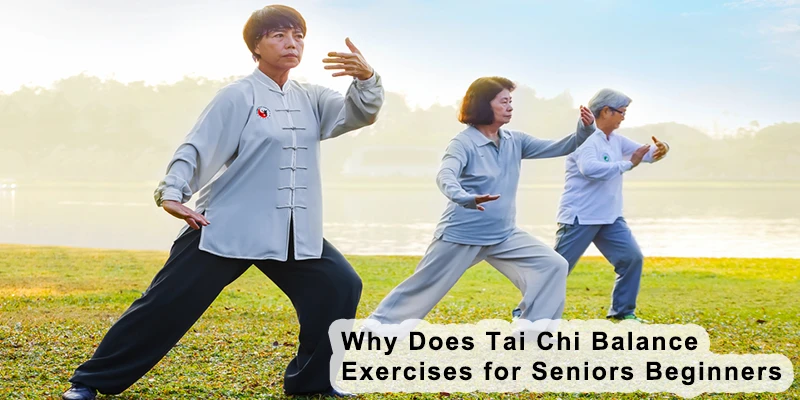
Tai Chi is one of the best low-impact exercises for seniors to enhance stability, coordination, and overall mobility. Its slow, flowing movements help strengthen muscles, improve posture, and promote mental relaxation. Research shows that Tai Chi reduces fall risk by up to 50% in older adults by:
- Strengthening leg muscles is critical for stability.
- Improving body awareness in space.
- Enhancing focus and calm, reducing distractions.
- Promoting flexibility through gentle stretches and weight shifts.
- Its meditative aspect also lowers stress and supports joint health.
The 108-Move Tai Chi Form
Among the many Tai Chi schools, 108 move Tai Chi ranks first, perfectly integrating graceful postures with a profound spiritual realm. It is also referred to as Taoist Tai Chi 108 Moves, which is more than just moves but a meditative journey to harmonize the energy of the body, mind and spirit. This part is mainly about the history, philosophy and benefits of 108-move Tai Chi.
108 Move Tai Chi Form History
108 Tai Chi is rooted in Taoist philosophy and the teachings of ancient Chinese masters. The number 108 has deep symbolic meaning in Taoism and Buddhism, representing 108 worldly desires to overcome, as well as the 108 energy meridians in the human body. In Taoist Tai Chi, the 108 movements embody this sacred numerology, balancing yin and yang, nourishing qi, and bringing the practitioner into harmony with the rhythms of nature.
Historically, the 108 taoist tai chi movements were originally as dynamic meditations designed to promote longevity and spiritual clarity. Unlike short movements, the 108 movements require patience and self-discipline, guiding the practitioner through smooth transitions that reflect the cyclical laws of the universe.
Taoist Philosophy in the 108-Move Form
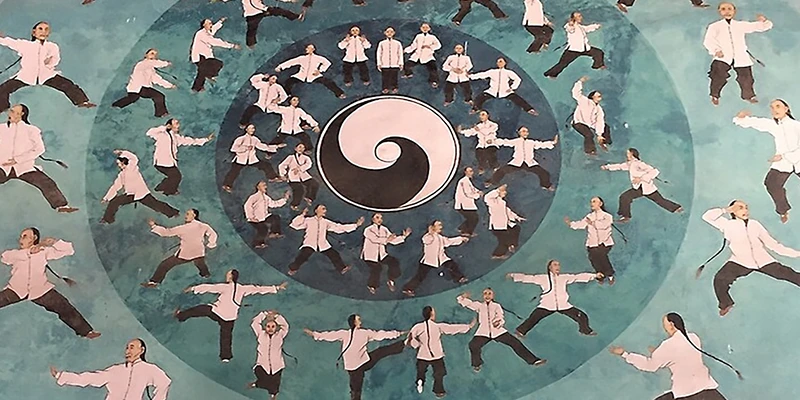
The Taoist Tai Chi 108 moves are an expression of Wu Wei, the Taoist principle of “effortless action.” The form’s fluidity mirrors water—soft yet powerful, yielding yet unstoppable. By practicing the 108 moves of Tai Chi, students learn to move with intention rather than force. Just as seasons change and day turns to night, the Tai Chi 108 form teaches practitioners to embrace life’s ebbs and flows with equanimity.
Why Practice the 108-Move Tai Chi?
The Tai Chi 108 form provides unique benefits for practitioners:
- Physical Health: Improves balance, joint health, and cardiovascular endurance through low-impact, full-body engagement.
- Mental Clarity: The rhythmic, repetitive motions calm your nervous system, reducing stress and anxiety.
- Spiritual Growth: Rooted in Taoist philosophy, the 108 form teaches people to let go of the ego and become one with the energy of the universe.
For those drawn to the Taoist Tai Chi moves 108 moves, the practice becomes a lifelong journey. It’s a lesson in patience and perseverance.
Tai Chi And Qigong
Chinese Tai Chi and Qigong (often spelled Chi Kung, Chi Gong, or Qi Gong) are frequently mentioned together. Because both focus on cultivating Qi, improving health, and harmonizing mind and body. In this part, we’ll explore the definitions, difference, and connection of Tai Chi and Qigong.
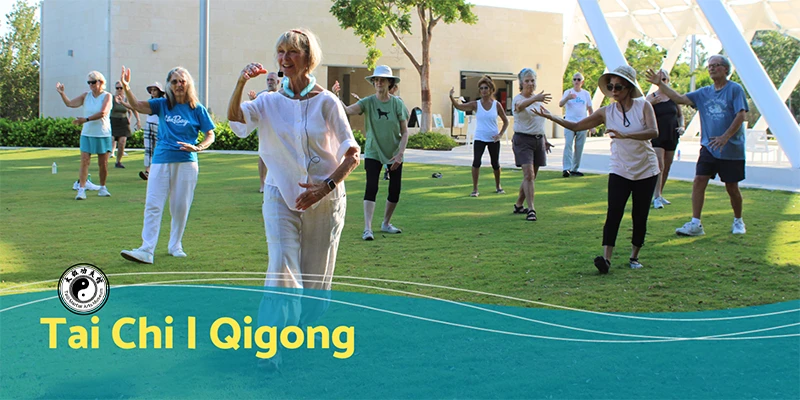
Definitions
Qigong translates to “energy work” or “life force cultivation.” It includes combining breath control, gentle movement, and meditation to balance your body. Chi Kung exercises or Qi Gong meditation often focus on static postures, rhythmic breathing, and thinking.
Tai Chi is a martial art that evolved from Qigong and Taoist philosophy. While Tai Chi is sometimes called Tai Chi Kung or Tai Chi Gung, it pays more attention to dynamic movement and martial applications than traditional Qigong.
Difference
First, qigong is flexible, with standalone exercises like Eight Brocades or Five Animal Frolics. Tai Chi follows specific forms (e.g., 24-Step Yang Style) that mimic combat motions. Second, Qigong meaning centers on energy cultivation—practices like Qi Gong health routines target specific organs or meridians. Tai Chi combines martial intent with meditative flow, often described as Qigong Taiji (Qigong within Tai Chi).
Third, Chi Kung is simpler to learn, making them good for beginners. But Tai Chi requires memorizing longer moves, such as the Tai Chi Chi Kung hybrid forms.
Connection
Many Tai Chi forms, like Tai Chi Qi Gong, combine Qigong breathing techniques and energy-focused postures. For example, Zhan Zhuang is a foundational Chi Kung exercise used to enhance Tai Chi stances.
Qi Gong health practices and Tai Chi both improve balance, reduce stress, and boost immunity. The slow, deliberate motions of Tai Chi and Qigong also enhance joint flexibility and mental clarity.
In conclusion, whether you’re exploring the Chi Kung or Tai Chi Qi Gong, both arts harmonize body and spirit. Qigong teaches us to harness Qi through simplicity and stillness, while Tai Chi turns that energy into graceful, purposeful motion.
How to Find Tai Chi For Beginners Near Me
Searching Tai Chi for beginners near you, whether you’re a senior, adult, or someone curious about martial arts, this part will help you locate the best beginning Tai Chi classes near me, and even Tai Chi certification classes in your area.
Use Google search terms like “best Tai Chi near me”, “Tai Chi classes in my area”, or “Tai Chi Chuan near me”. Check platforms like Meetup, Mindbody, or YMCA listings for local Tai Chi lessons. Pick one you like, fill out the form and get the price. However, you’re better off looking for a professional Tai Chi teacher who is certified in Tai Chi, or checking Google or Yelp ratings for “best Tai Chi classes near me.”
Many community centers offer affordable senior yoga classes alongside Tai Chi for beginners. Look for: Tai Chi classes near me (no long-term commitment).
Whether you search online for “tai chi classes for beginners near me” or you’re looking for a tai chi institute offline, you can view their local directory, request a trial class, and prioritize certified instructors.
How Does Tai Chi For Relieve Stress
Stress has become an unavoidable part of life, but Tai Chi (also called “moving meditation”) is a right method to calm the mind, balance energy, and reduce stress. In this part, you’ll how Tai Chi meditative principles and work together.
Tai Chi, its core lies chi meditation—the intentional cultivation and flow of “chi” through the body. Unlike static meditation, Tai Chi meditation integrates slow, deliberate postures with breath awareness. This movement and mental stillness makes you uniquely effective for stress relief. Next, I will show you how Tai Chi can relieve stress:
How Does Tai Chi Relieves Stress Work
- Tai Chi stimulate the parasympathetic nervous system, removing the stress response. Combined with chi meditation, this process quiets the mind and reduces anxiety. Focusing on breath and movement during Tai Chi meditation shifts attention away from stressors, grounding practitioners in the present moment—a key principle of mindfulness-based stress reduction.
- Traditional Chinese medicine believes stress to blocked chi. Tai Chi and chi meditation help unblock energy, restoring physical and emotional health. Regular Tai Chi practice has been shown to improve sleep patterns, partly due to its meditative, calming effects.
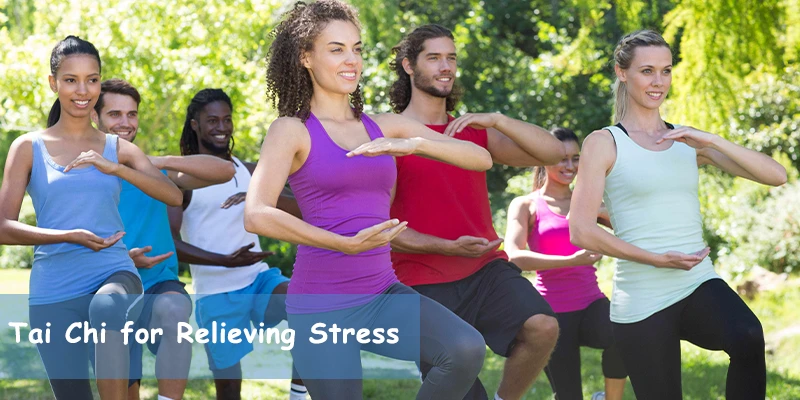
Practicing Tai Chi Meditation begins with gentle stretching and deep breathing, focusing on the feeling of your feet touching the ground, the rhythm of your breathing, and the flow of energy during the movement. Unlike high-intensity exercise, Tai Chi Meditation is suitable for people of all ages. Its low-impact nature minimizes the risk of injury while providing spiritual benefits.
In conclusion, combining exercise with meditation (such as Tai Chi) is more effective in reducing stress than static meditation alone.
Tai Chi Vs Yoga For Beginners: How to Choose
Whether you’re drawn to flowing movements, meditation, or stress relief, understanding Tai Chi vs Yoga for beginners will help you choose the right practice.
Tai Chi is slow, continuous, dance-like motions that involve weight shifting and posture adjustment. Yoga is static holds combined with dynamic flows; it prioritizes flexibility and strength. Tai Chi requires memorizing forms for those who enjoy gradual, repetitive learning. Yoga beginners can do poses right away or follow guided flows immediately.
In physical benefits, Tai Chi improves balance, joint health, and posture. But yoga enhances your flexibility, core strength, and muscle tone; certain styles (e.g., Vinyasa) provide cardio benefits.
In mental focus, Tai Chi meditative focus on movement and chi flow reduces stress through rhythm and practice. Yoga incorporates mindfulness and breath awareness; styles like Yin Yoga emphasize deep relaxation.
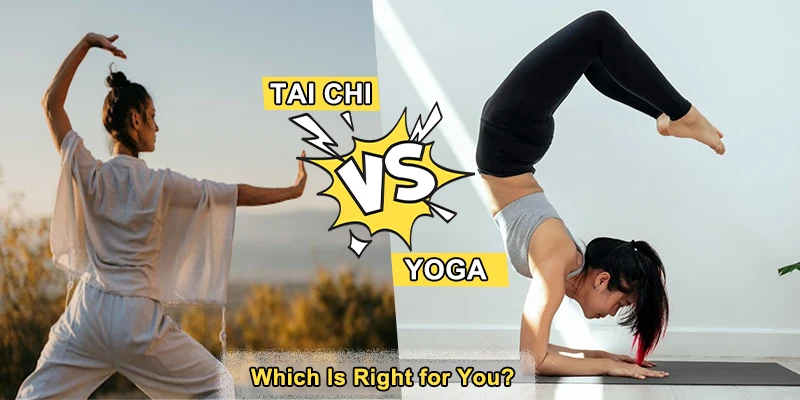
Tai Chi vs Yoga: How to Decide as a Beginner
- Do I prefer movement or static holds?
- Tai Chi’s continuous motion vs. Yoga’s mix of holds and flows.
- What’s my primary goal?
- Stress relief (both), energy balance (Tai Chi/Qigong), or flexibility (Yoga).
- How to get start?
- For Tai Chi: Learn moves like “Commencement” or “Cloud Hands” via online tutorials or classes. You can practice 10–15 minutes daily to build muscle memory. And focus on breathing deeply and staying relaxed.
- For Yoga: Start with beginner-friendly styles like Hatha or Yin Yoga. You should use props (blocks, straps) to modify poses safely. Follow guided classes on apps like YouTube or Down Dog.
Conclusion
From its Taoist roots to modern wellness, Tai Chi offers timeless benefits. Whether practicing basic moves like Qǐshì or exploring the 108-form, perseverance relieves balance and calm. Start with free resources or local classes to begin. Let Tai Chi’s meditative flow guide you—step by step, breath by breath—toward harmony of body and mind.



